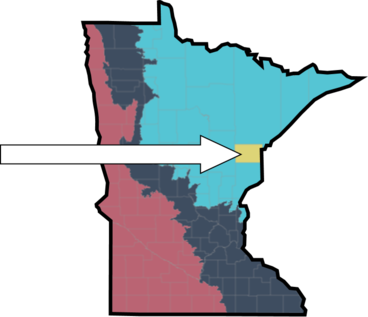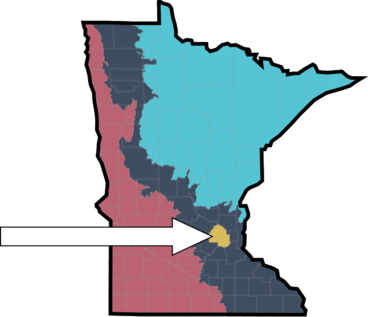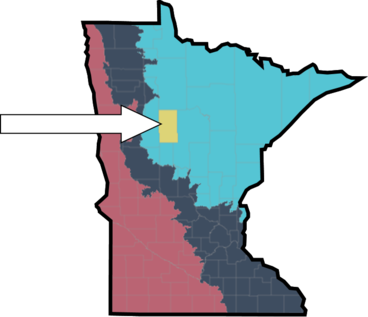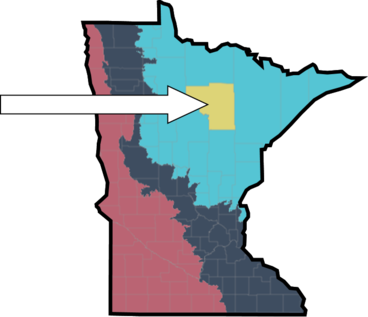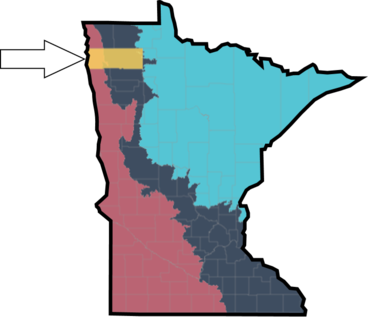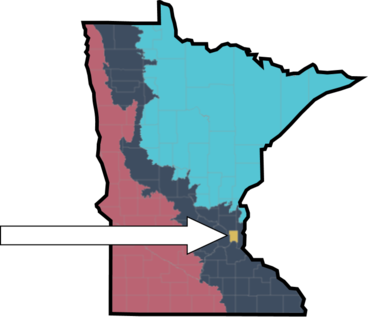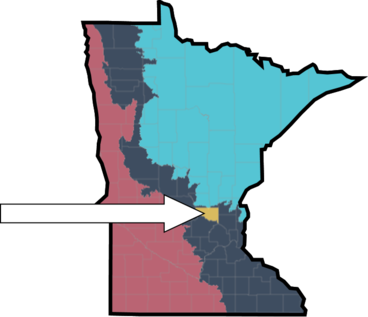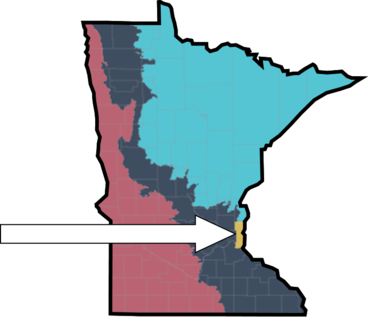Explore phenology as a way to understand the places where we live.
Phenology is the study of seasonal changes in plants and animals and how those changes relate to climate. The final clause of that definition, "how those changes relate to climate," points the importance of place because climate varies from place to place.
On this page, you can:
- Learn about general connections between place and phenology.
- Pick a place to find out what historical data are available. (Jump to this section.)
Connections to the environment
Phenologists take a deep interest in the ways organisms are integrally linked to their specific environments. As an environment changes in temperature, moisture, daylength, and other factors, living things respond by going through their cycles of eating (or making energy), resting, and reproducing.
Phenology depends on place
Latitude (how far north or south a place is)
Daylength and temperature vary along a north-south gradient. Compared to southern parts of the state, northern Minnesota generally has later springs and corresponding delayed phenology. You can find this pattern in several places on the Season Watch website. For example, the average flowering date for common lilac in Ramsey County is May 12 whereas in Itasca County, the average date is May 21.
Longitude (how far east or west a place is)
Minnesota is generally wetter in its eastern parts and drier in the west. Moisture is one of several environmental factors that affect phenology.
Sun exposure
Imagine this scenario: Two individual trees of the same species grow on either side of a small valley. The tree on the south-facing slope has open flowers on March 15, but flower buds on its north-facing neighbor remain closed until March 30. Why are they different? Plants are sensitive to the intensity and duration of sunlight. Microclimatic factors, which can vary substantially over small physical distances, strongly influence the start time and speed of plant growth [1].
[1] Jackson, Marion T. "Effects of microclimate on spring flowering phenology." Ecology 47, no. 3 (1966): 407-415. https://doi.org/10.2307/1932980
Urban development
The Twin Cities Metro Area is about 2°F warmer than surrounding, non-urban areas. Cities also have more artificial light than surrounding areas. Urban heat and light can result in leaves turning green earlier in spring and turning color later in the fall, compared to rural observations of the same tree species. [2]
Heat and light are not the only factors that can influence the phenology of living things. For example, the availability of bird food at birdfeeders has been shown to shift the winter response of a bird called the blackcap. [3]
[2] Meng, Lin. "Green with phenology." Science 374, no. 6571 (2021): 1065-1066. Link to this article in SCIENCE >
[3] Van Doren, Benjamin M., Greg J. Conway, Robbie J. Phillips, Glynne C. Evans, Graham CM Roberts, Miriam Liedvogel, and Ben C. Sheldon. "Human activity shapes the wintering ecology of a migratory bird." Global Change Biology 27, no. 12 (2021): 2715-2727. https://doi.org/10.1111/gcb.15597
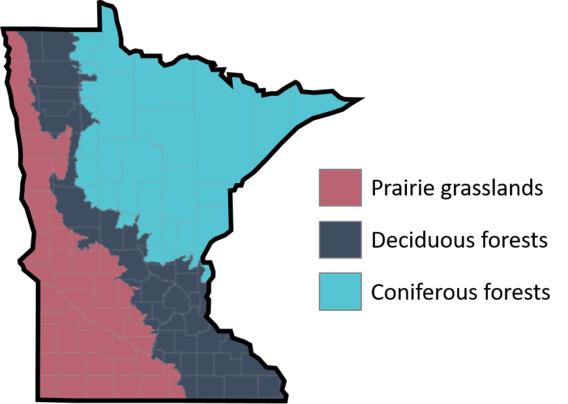
Minnesota ecosystemsMinnesota has three major terrestrial biomes, or kinds of ecosystems that dominate different land areas (see map). These biomes are largely shaped by climate, and they differ substantially in terms of which plants and animals they support. |
Below is a small sampling of plants and animals typical of Minnesota ecosystems.
- White sage (Artemisia ludoviciana) is a typical plant of Minnesota's prairie grasslands.
- Red maple (Acer rubrum) is a typical tree of Minnesota's deciduous forests.
- American tamarack (Larix laricina) is a typical tree of Minnesota's coniferous forests.
- Spring peeper (Pseudacris crucifer) is one of countless species that depend on Minnesota's waterways and wetlands.
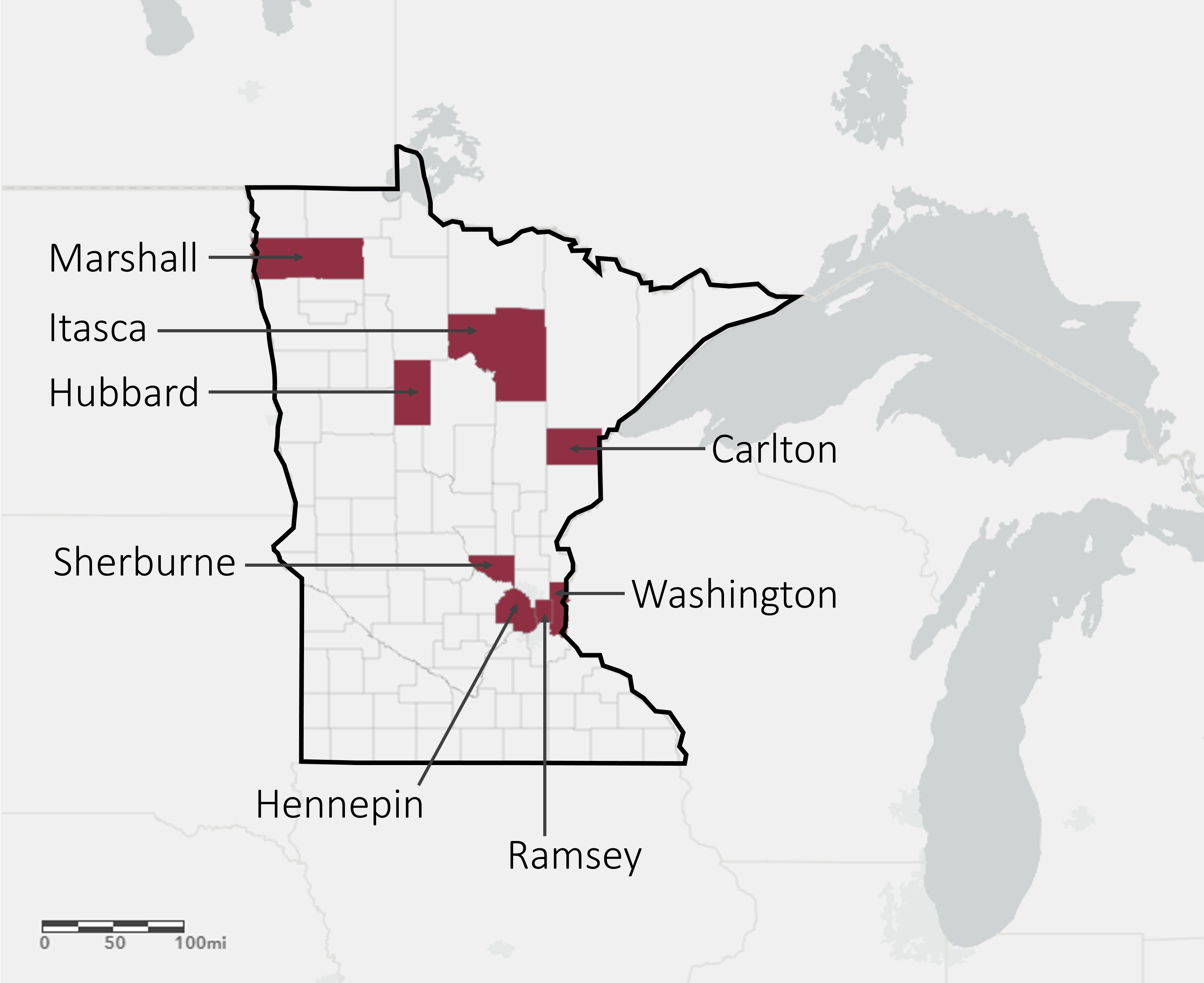
Phenology records are commonly organized by county, sometimes without finer detail (e.g., city, township, or landmark). One reason for this is to protect the whereabouts of the observers, as well as the organisms being observed.
Use the tabs and links below to access graphs, tables, and more information about valuable phenology records from Minnesota.

